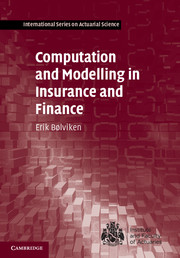Book contents
Appendix C - Numerical algorithms: A third tool
Published online by Cambridge University Press: 05 May 2014
Summary
Introduction
Can't we simply rely on the available software and avoid what is behind numerical methods altogether? A lot of work can be completed that way with numerical algorithms as black boxes, but if things go wrong you are stuck without knowledge of what's on the inside, and should you become involved in software development, numerical tools play a leading role. For a broad and practically oriented text try Numerical Recipes in C (Press et al., 2007), with sister volumes in C++, Fortran and Pascal, which comes with hundreds of implemented procedures that can be downloaded and used for your own programming.
The purpose of this appendix is the much more modest one of reviewing numerical methods for this book in a relaxed manner which doesn't require prior knowledge of numerical mathematics. A lot can actually be achieved with a handful of elementary methods, and some of them are up to 200 years old! Minimizing or maximizing functions is an exception deserving special mention. Since the days of Newton–Raphs on the world has moved far, and optimization software may work magnificently even when differentiation is carried out numerically. Why is it advantageous to avoid exact calculation of derivatives? Because implementation is often time consuming, and when the function to be optimized is a Monte Carlo simulation it may be impossible. Don't differentiate the function to be optimized to solve equations instead. This is still advocated in some textbooks, but after considerable effort the original problem has been replaced by a more difficult one! Non-linear equations in one variable are easy (Section C.4). Several of them are best avoided (if possible).
Information
- Type
- Chapter
- Information
- Computation and Modelling in Insurance and Finance , pp. 641 - 655Publisher: Cambridge University PressPrint publication year: 2014
